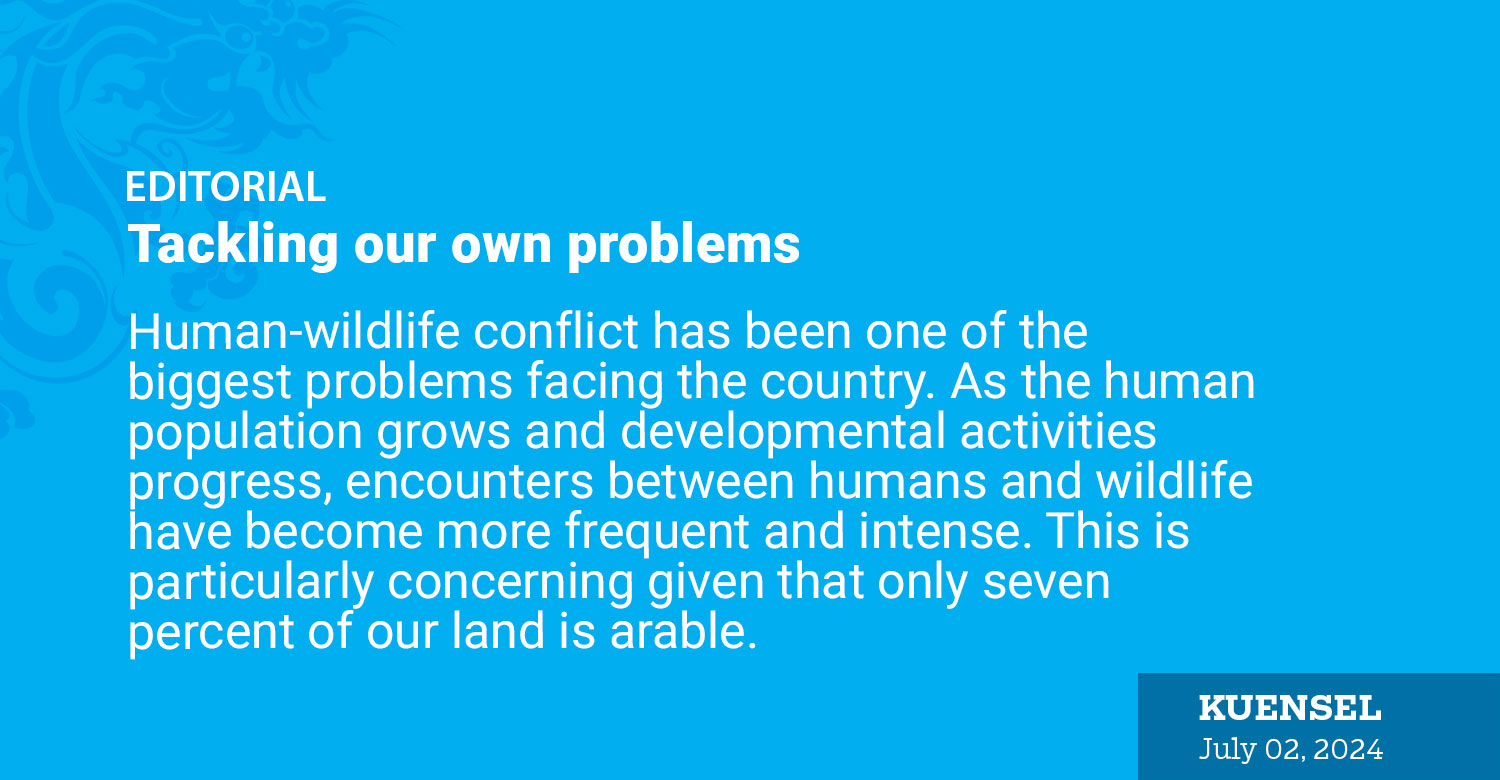Human-wildlife conflict has been one of the biggest problems facing the country. As the human population grows and developmental activities progress, encounters between humans and wildlife have become more frequent and intense. This is particularly concerning given that only seven percent of our land is arable.
Farmers, the backbone of our agricultural economy, are increasingly leaving their land fallow and migrating to urban areas, abandoning traditional livelihoods due to the persistent threat of wildlife intrusion. However, the innovative approaches adopted by the farming community in Samrang in Samdrupjongkhar offer hope and a template for sustainable coexistence.
In Samrang, farmers have taken proactive steps to address the menace of elephants encroaching on their fields. Recognising that these majestic creatures were driven to human settlements in search of food and water, the community embarked on a mission to restore the natural habitats of elephants. This involved constructing waterholes within the forests, establishing saltlick sites, and planting fodder grass to provide sufficient food sources for the elephants away from human habitation.
These efforts have been remarkably successful in reducing the frequency of elephant raids on farmlands, allowing the farmers to cultivate their lands peacefully.
This approach highlights the importance of community-led solutions in tackling human-wildlife conflict. Local communities possess an intrinsic understanding of their environment and are perhaps best positioned to develop and implement strategies that ensure the safety and well-being of both humans and wildlife. The success in Samrang demonstrates that empowering communities to take charge of conservation efforts can lead to innovative and effective outcomes.
The proactive measures taken by the Samrang community also highlight the significance of addressing the root causes of human-wildlife conflict. By ensuring that elephants have access to natural resources within their habitats, the community has successfully diverted them away from agricultural lands. This not only protects the livelihoods of farmers but also contributes to the conservation of elephants, reinforcing our commitment to preserving our rich biodiversity.
Adopting community solutions is not only a pragmatic approach but also a sustainable one. By fostering a culture of coexistence and mutual respect, we can ensure the well-being of our communities and the survival of our wildlife.
Samrang’s initiative is a proof of the power of collective action. When communities come together with a shared vision, they can overcome even the most daunting challenges. The collaborative efforts in Samrang have transformed the area into what could be called a model of coexistence, where humans and elephants live side by side in harmony. This success story should inspire other communities across the country to explore similar strategies tailored to their unique circumstances.


